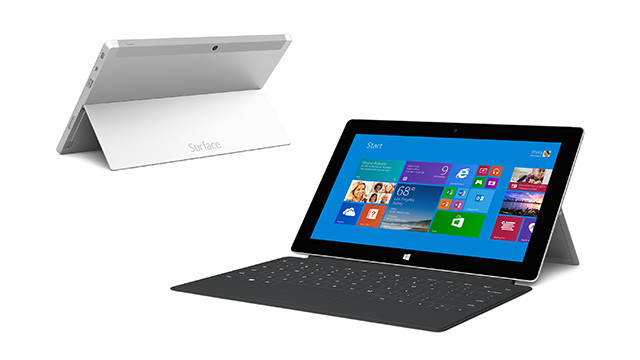
When Microsoft announced it would write-down $900 million in Surface RT inventory, many thought it could signal Microsoft’s exit from the market and that the company would return to its old model of leaving its hardware partners to build Windows devices. Yet Microsoft defied those who called for the exit and forged ahead with the Surface 2 product line.
On paper, it seems like a foolish move and that Microsoft is throwing its money away on creating a product that consumers do not want. But if you look at the market as a whole in tandem with Microsoft’s new strategy, you can begin to see why the company is willing to lose money in this segment up front in a bid to secure long-term success.
Right now, in the mobile market, Microsoft does not have a strong footprint, and the time has come to make heavy-duty investments to ensure that Windows is part of the tablet conversation. If they don't move now - if they do nothing - despite the losses, they will end up in worse shape than in the smartphone segment, in which Microsoft has only managed to gain roughly 3% of the worldwide market.
To secure its mobile strategy, Microsoft is going to purchase the smartphone business unit from Nokia and take the Lumia line in-house to make sure that Windows Phone always has quality hardware on the market. By making this move, the company will have a line of products, with strong brand perception, in its portfolio. Sure, they have a long way to go to claim serious market share, but the pieces are falling into place. With Surface, Microsoft is using its own home-grown product to find market share, and to abandon that approach now would be a serious mistake.

Image Credit: Readtechnews.com
There is no hiding the fact that, even though it was first to the tablet space, Microsoft was late when consumer adoption snowballed after the announcement of the iPad. Because it was late, the $900 million write-down is the price that it must pay to build brand equity.
The losses are hard to ignore, and the fact that Microsoft is building a Surface 2 likely has many shareholders on the edge of their seats to see if Microsoft can find a way to break into this market in a way that is profitable. If Microsoft is forced to write-down another massive loss against Surface inventory, the company will come under intense pressure from its shareholders.
The critics of Microsoft are out in full force and offering up advice at every earnings release. The fact remains, though, that Microsoft is still extremely profitable and has strong footings in the enterprise and the consumer space. But the time has come to expand its profitable consumer line of goods, and that will not come cheaply. The $900 million write-down is the tax that they must pay to build brand equity
Unlike Apple, which can put its name on nearly anything and sell them in the millions, Microsoft has to build out its consumer chops once again in the hardware space. Because of this, simply branding a tablet as being “Made by Microsoft” does not guarantee success, as we learned with the first Surface products.
Microsoft’s bank account does not exist solely to appease shareholders; there are times when the company must make tough and sometimes controversial decisions about how to spend its capital to secure future revenue. That is what we see here - Microsoft burning capital to build and strengthen Surface branding and its future revenues, and the company will do this at any cost, rightfully so.
Microsoft has, as of July, roughly $77 billion in the bank. While the company has spent some capital on the purchase of Nokia's smartphone line of business and increased its dividend, it is not struggling with cash reserves by any means.
If you find yourself in the camp that says building hardware as a first party is a foolish move for Microsoft, look at Apple and now Google: They have proven this model. It is important to note that Microsoft is not directly copying Apple or Google's business models as Microsoft has many streams of systemic revenue on its enterprise and consumer sides. Despite Microsoft being late to the party, they are willing to pay the late adoption tax and force itself into the market.

Remember, it’s easy to make decisions when your business unit is profitable; the tough decisions come at securing future revenues of unprofitable business units.
Ultimately, for Microsoft’s device and services business model to work, Surface must survive its initial woes and find a way to become profitable. Without the Surface, Microsoft will be missing a key piece of the puzzle, Without the Surface, Microsoft will be missing a key piece of the puzzle
as they now have mobile (with the acquisition of Nokia’s smartphone business), entertainment with the Xbox One, and of course, the consumer line of tablets/PCs with the Surface lineup.
Right now, Microsoft is able to make mistakes and recover from them as they have several lines of business that are consistently profitable by a wide margin. But if Microsoft continues to misjudge the consumer market, it may not have many more chances to come from behind.
How Microsoft utilizes the Surface 2 and Pro 2 in advertising will be an interesting spectacle from the sidelines. We will be curious to see how Microsoft changes its strategy from the first Surface as the new devices offer up new opportunities to build brand awareness with consumers. One thing is for sure: Microsoft needs the Surface brand to resonate well with consumers as it is a cornerstone of its ‘device and services’ model.






_small.jpg)









44 Comments - Add comment